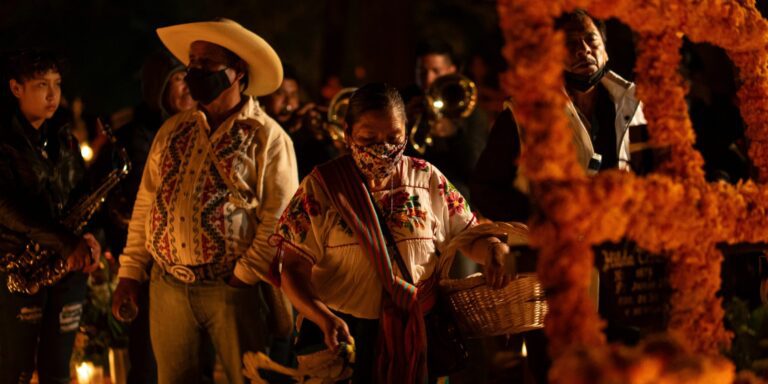On October 18, 2025, San Antonio, Texas, launched its largest-ever Día de los Muertos (Day of the Dead) festival, signaling the beginning of the six-week “Spirit Season” event that has become an integral part of the city’s cultural calendar. This festival has grown into one of the most significant celebrations in San Antonio, drawing thousands of visitors from all over the region and beyond. It serves as both a tribute to the Mexican community’s rich cultural heritage and an invitation for people of all backgrounds to come together and honor the memory of their deceased loved ones.
Día de los Muertos is a deeply meaningful tradition in Mexican culture, a day that combines both somber reflection and joyous celebration. The festival in San Antonio is one of the largest of its kind in the United States and captures the spirit of this tradition with its colorful, vibrant festivities. At the heart of the event are the intricate altars, or “ofrendas,” that are meticulously crafted in honor of the departed. These altars are decorated with bright marigolds, candles, photographs, and offerings of food and drink, each serving as a symbolic invitation for the spirits of the deceased to return home for the day. Visitors to the festival can see these altars set up in public spaces, parks, and cultural venues across the city. The altars are not only visual works of art but also an emotional reminder of the continuing bond between the living and the dead.
The celebration features an impressive lineup of music and dance performances that bring a festive, spirited atmosphere to the event. Traditional mariachi bands fill the air with the joyful sounds of Mexican folk music, while folklórico dancers add a visual layer to the celebrations, showcasing the grace and vibrancy of Mexican dance traditions. These performances, often held in outdoor plazas or community centers, provide a space for participants to immerse themselves in the cultural richness of the festival. The energy of the performances offers a way for attendees to connect with the joy of the celebration, despite its deep roots in remembering those who have passed away.
In addition to music and dance, food plays a pivotal role in the Día de los Muertos festival. Local vendors offer a wide range of traditional Mexican dishes that celebrate San Antonio’s diverse culinary heritage. Among the most popular offerings are sweet “pan de muerto” (bread of the dead), a soft, sugar-dusted bread often shaped like a skull or crossbones, as well as tamales, tacos, and other beloved Mexican comfort foods. The sharing of food during the festival is symbolic, reflecting the belief that the spirits of the departed return to partake in the pleasures of the living world. For many attendees, enjoying these culinary delights is a key part of experiencing the cultural essence of Día de los Muertos.
Read Also: https://nvtoday.com/santa-fe-indian-market-celebrates-indigenous-art-and-culture/
As the festival continues to grow in size and significance, it serves not only as a celebration of life but as a way for San Antonio’s diverse community to come together and reflect on shared cultural traditions. Although Día de los Muertos has its origins in Mexico, the festival in San Antonio is inclusive, encouraging people of all backgrounds to participate and learn about the customs and practices that define this important cultural observance. The city’s commitment to honoring Mexican traditions through this celebration fosters a sense of pride among local residents and allows visitors to experience firsthand the vibrancy of Mexican culture.
The impact of the Día de los Muertos festival reaches beyond the event itself, offering a space for education and cultural exchange. Many of the festival’s activities, including guided tours of altars, workshops on crafting traditional decorations, and storytelling sessions about the history of the holiday, provide an opportunity for attendees to deepen their understanding of the customs that are central to the celebration. In this way, the event becomes a cultural learning experience for both locals and visitors, contributing to a broader appreciation for the importance of preserving cultural traditions and honoring the deceased.
In conclusion, the Día de los Muertos festival in San Antonio is more than just a day of celebration; it is a reflection of the city’s deep cultural roots and its ongoing commitment to fostering inclusivity and cultural pride. Through the creation of elaborate altars, the performance of traditional music and dance, and the sharing of food, the festival offers a meaningful way for the community to come together and honor the lives of those who have passed. The festival is a testament to the enduring power of tradition and the way that cultural heritage can bring people closer, creating lasting memories and connections that transcend time.


